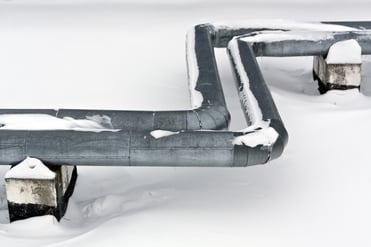 Winter-proofing buildings is an important activity this late in the year—particularly in temperate regions where the cold isn’t a year-round thing, but can still be harsh enough to freeze water in pipes.
Winter-proofing buildings is an important activity this late in the year—particularly in temperate regions where the cold isn’t a year-round thing, but can still be harsh enough to freeze water in pipes.
There are many tools that home and business owners can use to winter-proof their buildings. One tool that many forget about is the humble moisture meter.
How Moisture Meters Can Help Winter-Proof Buildings
The primary purpose of a moisture meter is to detect the presence and amount of moisture in building materials such as wood or drywall.
By detecting excess moisture in a building, moisture meters can help spot moisture intrusion sources. This is critical for winterizing a structure.
One of the key steps for winterizing a building is to check the perimeter of the structure for areas that could let water inside. However, not every crack, hole or gap that’s large enough to allow water in is easy to spot with the naked eye.
Moisture meters allow users to check inside a structure for excess moisture and pinpoint moisture intrusion sources. Once found, these moisture intrusion points can be fixed, helping to winter-proof the building.
Checking Winter-Proofing Measures
Aside from identifying water intrusion sources, a good moisture meter can help you double-check some of your other winter-proofing efforts.
For example, you could use pin-type moisture meters to inspect insulation for signs of water intrusion. This is especially important for new insulation being placed around pipes because if they get soaked with water, the insulation won’t be as effective at protecting the pipes.
Periodic retesting of the structure and your winterization measures can help you spot a problem early on—minimizing the potential damage.
Picking the Right Moisture Meter for Winterizing a Building
When looking for a moisture meter to help you winterize a structure, it’s important to consider whether speed or pinpoint accuracy is more important to you. A pinless moisture meter can be incredibly quick at detecting moisture in a structure—but it will require a flat surface to work.
Pin-type meters can provide incredibly accurate information about how deep a moisture pocket is—but they leave pinholes in wood and can only test the small area between the pins for moisture.
Ideally, whatever kind of moisture meter you use, you’ll probably want to use one that has wood, drywall, and/or reference scale reading modes to make sure that you can test a wide variety of building materials for moisture.
Need help finding the perfect moisture meter for winterizing a home or office? Check out some great building inspection moisture meters today!

Comments